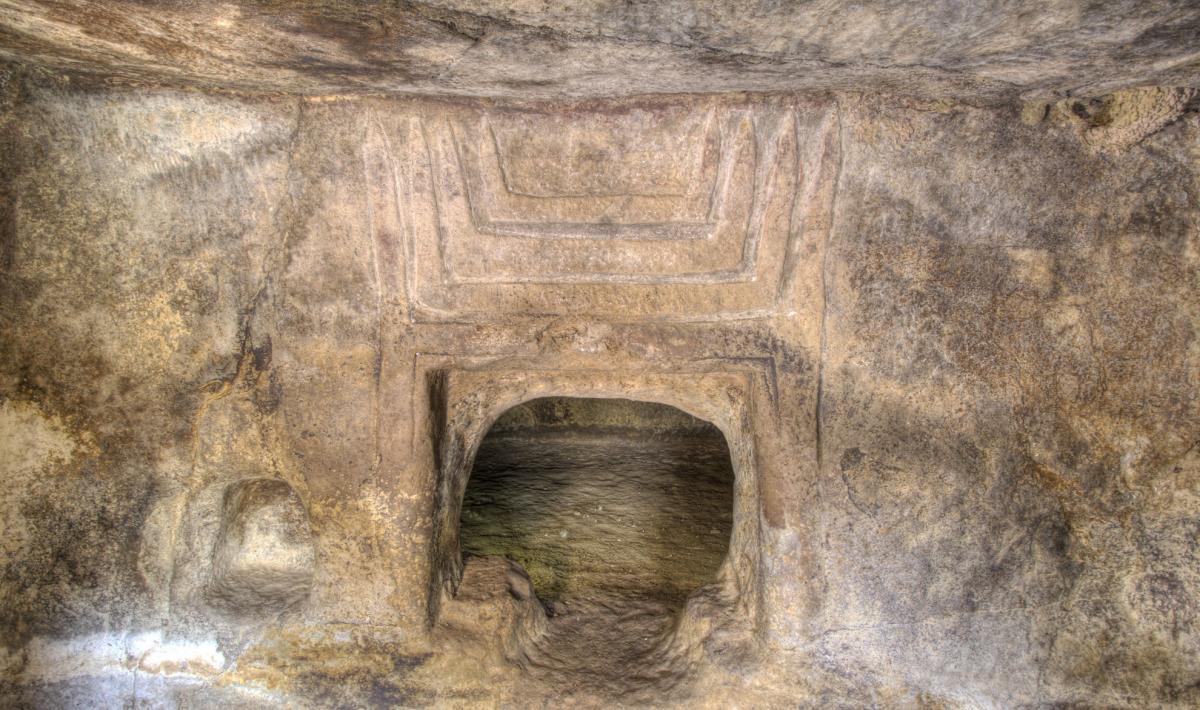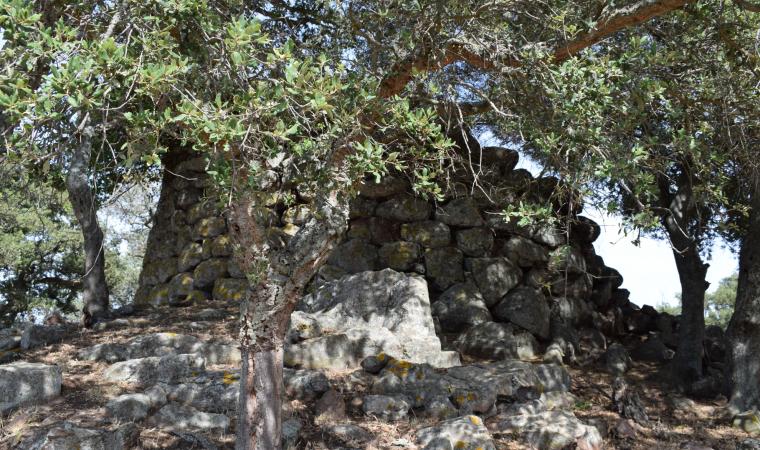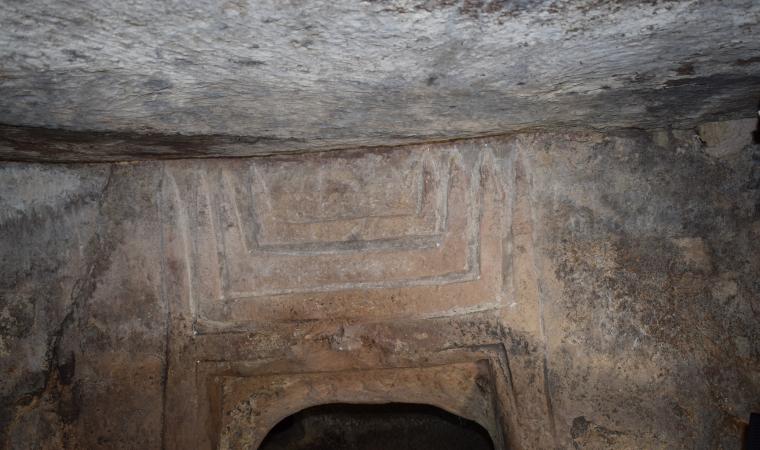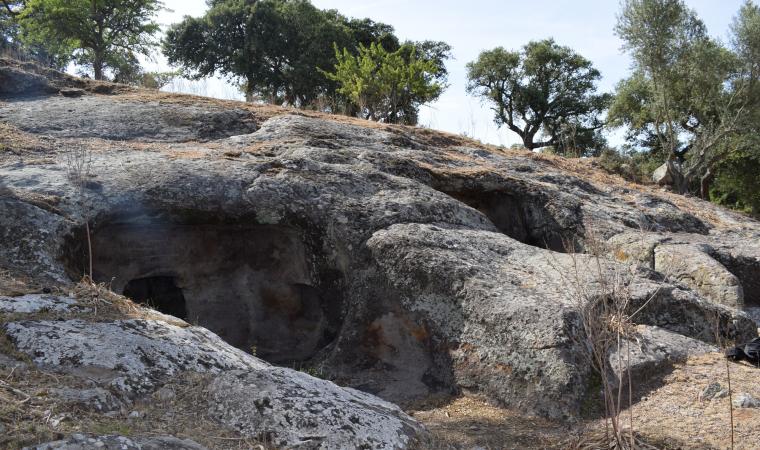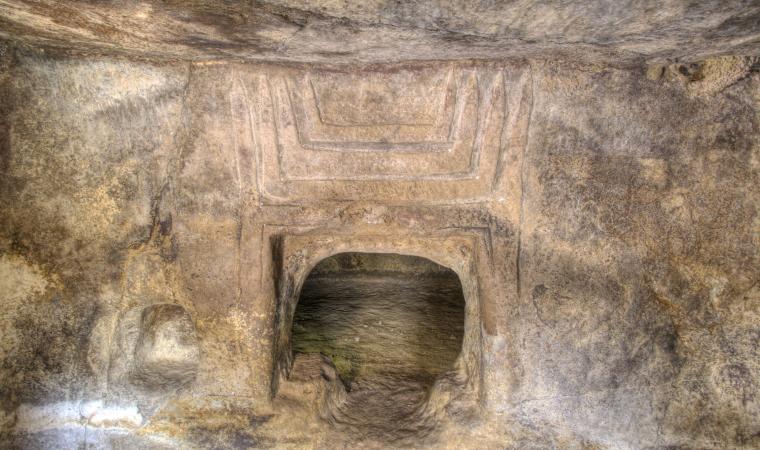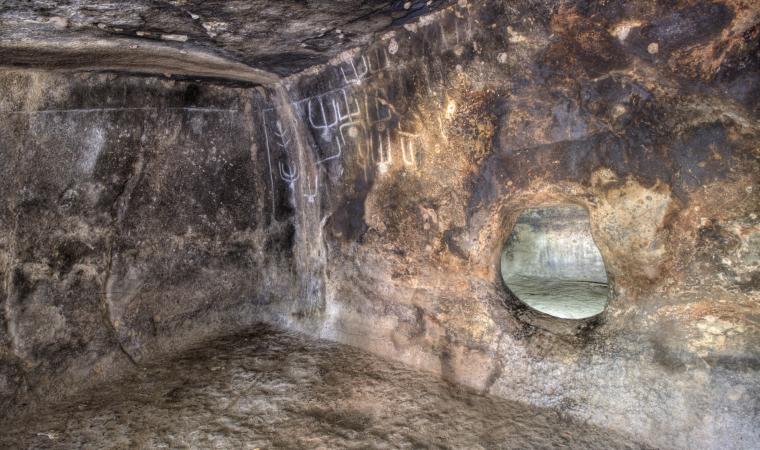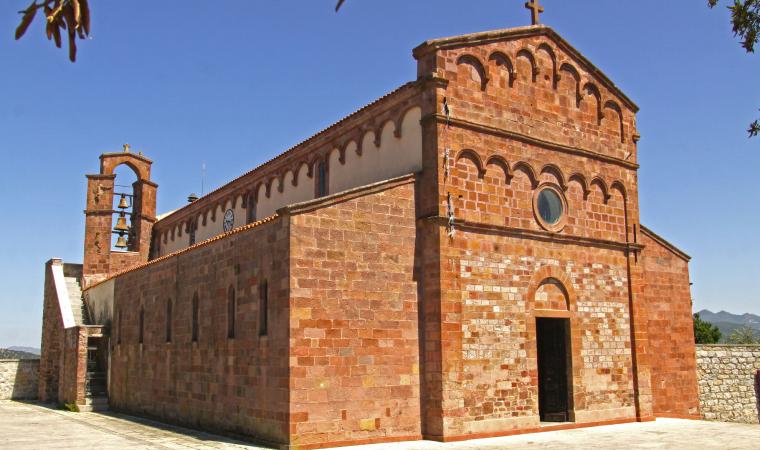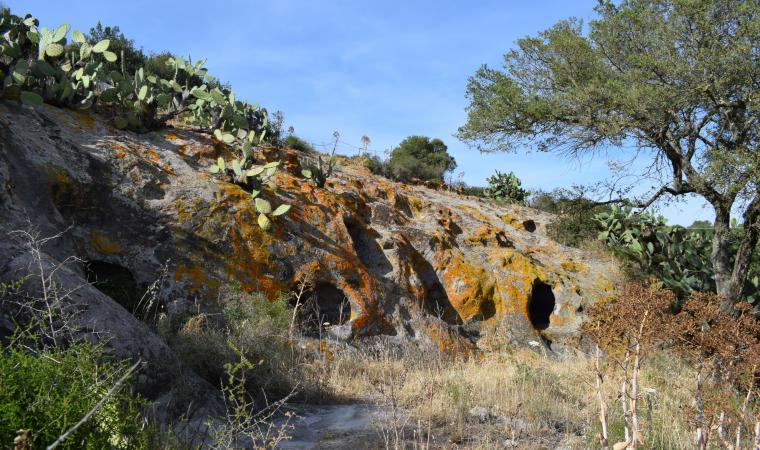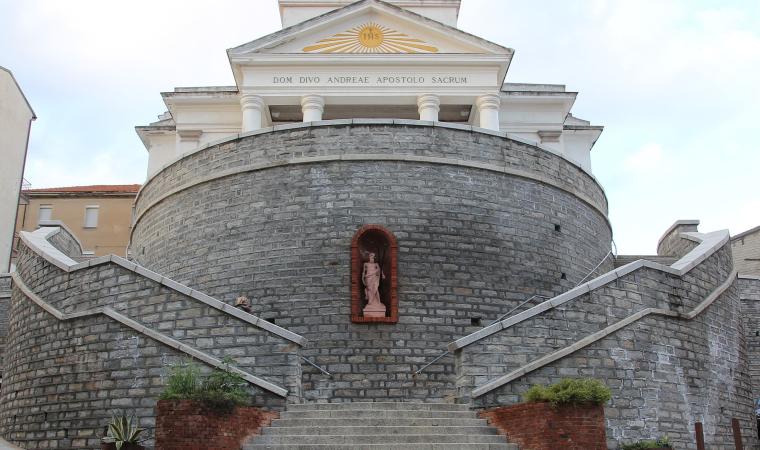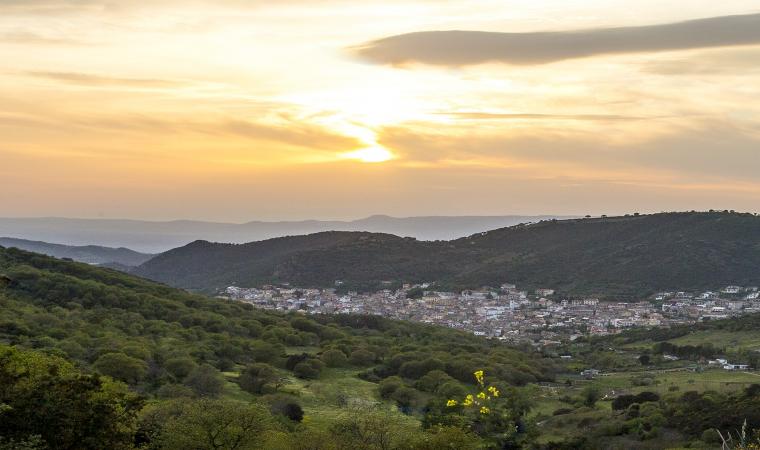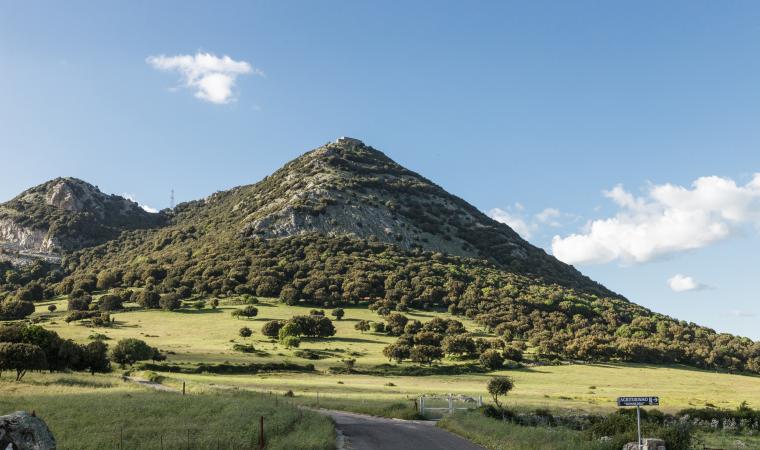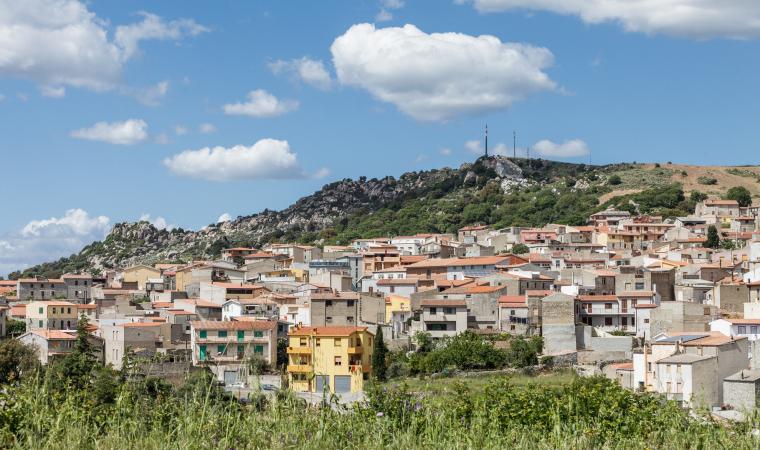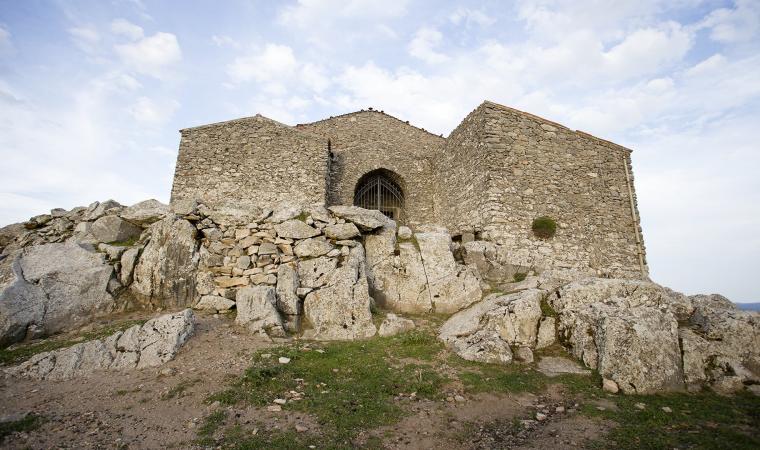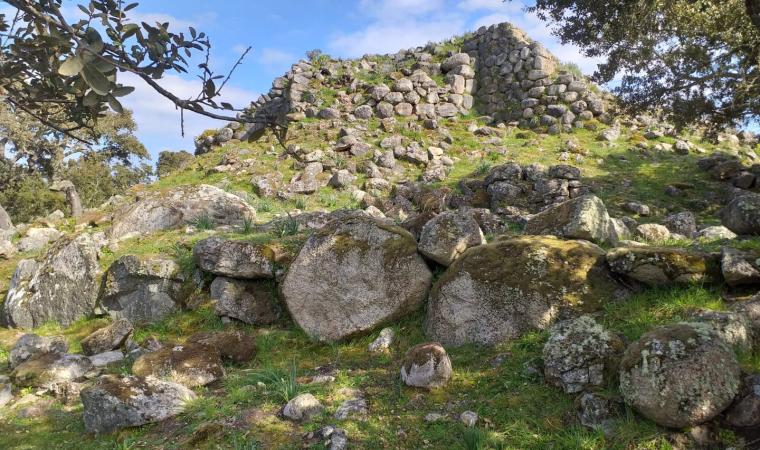This evidence is carved into the slopes of a trachyte hill, just below a single-tower nuraghe. The four hypogeic tombs of Brodu are located in the territory of Oniferi, about four kilometres from the residential area. After leaving the provincial road towards Macomer, you can reach them on foot by wading across a stream and climbing the slope beneath the nuraghe of the same name, which dominates the territory from the top of the hill. Two of the tombs are notable for their size and state of preservation. However, little remains of the other two and of the nuraghe, the tower of which is partly buried.
The necropolis reveals phases of different cultures, covering a period between 3200 and 1600 BC.

